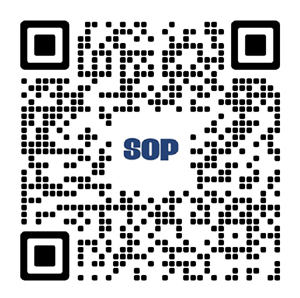
Overall Trends in the Global Software Market
From a global perspective, software technology and industrial landscape are gestating a new round of major adjustments. The increasing popularity of internet applications, the rapid improvement of infrastructure and hardware levels, the continuous deepening of application demand, and the continuous innovation of business models are driving the global software industry into a period of industrial transformation.
一、Software technology presents a trend of networking, intelligence, and platformization development
Networking has become the fundamental direction of software technology development. The focus of computing technology is shifting from computers to the Internet, which has become a platform for software development, deployment, and operation. With the continuous innovation of internet-based software architecture, distributed computing models, and storage methods, internet-based development models and tools will become mainstream, greatly improving software development efficiency, shortening research and development cycles, and reducing research and development costs. Software applications will also move towards networking, and open platforms for network applications have become the focus of competition in the Internet era. Third party developers can utilize the open platform of network applications to deeply interact with a large number of users and develop rich applications. The Internet itself is also constantly expanding and evolving, with the emergence of social networks (SNS), software as a service (SaaS), and others. In the future, the network will form an ubiquitous and omnipotent ubiquitous network, and the development and application of networking will continue to innovate.
Intelligence is the goal pursued by software technology. Intelligence is the automatic recognition of knowledge based on massive amounts of information, endowing information systems with adaptive capabilities, and significantly improving resource allocation efficiency. The trend of software intelligence development is mainly reflected in aspects such as situational awareness, knowledge mining, and automatic development. With the rapid development of the Internet of Things and the ubiquitous internet, perception technologies are becoming increasingly diverse, and the perception range is gradually expanding from physical forms such as temperature, water, gas, and objects to the field of conscious thinking. The software will be able to automatically and efficiently extract the required knowledge from complex and diverse massive data, with more advanced software development languages and integrated development tools.
Platformization is a new engine for software technology and product development. The operating system, database, middleware, and application software are mutually penetrating, evolving into a new system of integrated software platforms. The integration of hardware and operating system software can reduce the complexity of IT applications and meet the needs of users for flexible deployment, collaborative work, and personalized applications. There are two main directions for platformization: one is based on a technical level infrastructure platform; One is an application platform based on a business model. Under the trend of platformization, the competition in software has evolved from a single product competition to inter platform competition. In the future, the software industry will construct an industry chain around mainstream software platforms.
二、The software industry is showing a trend of service-oriented and integrated development
Servitization has become an essential feature of the transformation of the software industry. Software construction technology and application patterns are shifting towards user centeredness. In the software sales model, users no longer need the software license sales model and only need to purchase services through the internet. The service charging mode can be adjusted according to various methods such as usage time, usage frequency, functional modules, and even calculation volume, making it convenient for users to choose. In the deployment mode, users do not need to purchase a large amount of software and hardware, which not only saves costs but also avoids risks. In terms of operation and maintenance, users no longer need to equip a large team of professional talents and do not need to maintain and upgrade their own information systems. In terms of service mode, user needs are fully customized, and users can purchase software functional modules according to their needs to achieve on-demand services. Cloud computing is a mainstream model of software service-oriented services, which can dynamically provide computing resources, storage resources, software applications and other resources according to user needs. It has the advantages of dynamic scalability, low usage cost, good manageability, energy conservation, safety and convenience.
Integration is a new space for software technology and industrial development. Software technology and industry are entering a highly integrated stage based on a highly differentiated foundation. On the one hand, the technical system and business fields of software are becoming increasingly specialized; On the other hand, the integration between software and hardware, software and networks, products and businesses, and software industry and other industries is constantly deepening. The penetration of software in various industries continues to deepen, and the integration of the software industry with other industries continues to deepen, promoting the improvement and innovative development of other industries. At the same time, the trend of integration has spawned a large number of new technologies, models, and formats, creating huge market demand.
三、The software market is showing an international and integrated development trend
The internet is widely popularized globally, and its influence is ubiquitous and pervasive. For software manufacturers, the software products and services they provide must be able to adapt to different regions, devices, platforms, and support different languages. The development of the Internet not only connects global markets, but also drives communication and cooperation among different software vendors and follows common standards due to its openness and interactivity. Talent is the key to the development of the software industry, and the internationalization of talent is also an important feature of the internationalization of the software market. The significance of software technology itself has transcended political and cultural categories, and technological innovation has gradually eliminated the boundaries between nations and races. Talents consider their own development space and opportunities globally, and the international flow of software talents will become increasingly frequent.
The continuous maturity of the software industry has intensified market competition. In order to survive and develop, software companies must make every effort to improve their competitive advantages. Accelerating resource integration through mergers and acquisitions, business adjustments, and other means is an important way for software companies to expand their strength and gain market competitive advantages in a relatively short period of time. With the continuous emergence of new technologies, models, and demands, the trend of rapidly accumulating strength through integration to seize technological opportunities and markets is becoming more apparent. Mergers and acquisitions are the main way for software companies to integrate. From the perspective of purpose and effectiveness, software enterprise mergers and acquisitions mainly include the following types: by acquiring technologies or products that they do not possess, expanding product lines, and improving the ability to provide system solutions to customers; By acquiring technologies or products that have their own but weaker competitiveness, while enhancing their own competitiveness, reducing competitors; Directly acquiring market resources from the other party through mergers and acquisitions; Implementing the company's internationalization strategy through cross-border mergers and acquisitions; Realize strategic transformation of the company through mergers and acquisitions of enterprises that operate non core businesses of the company.

 cn
cn en
en



